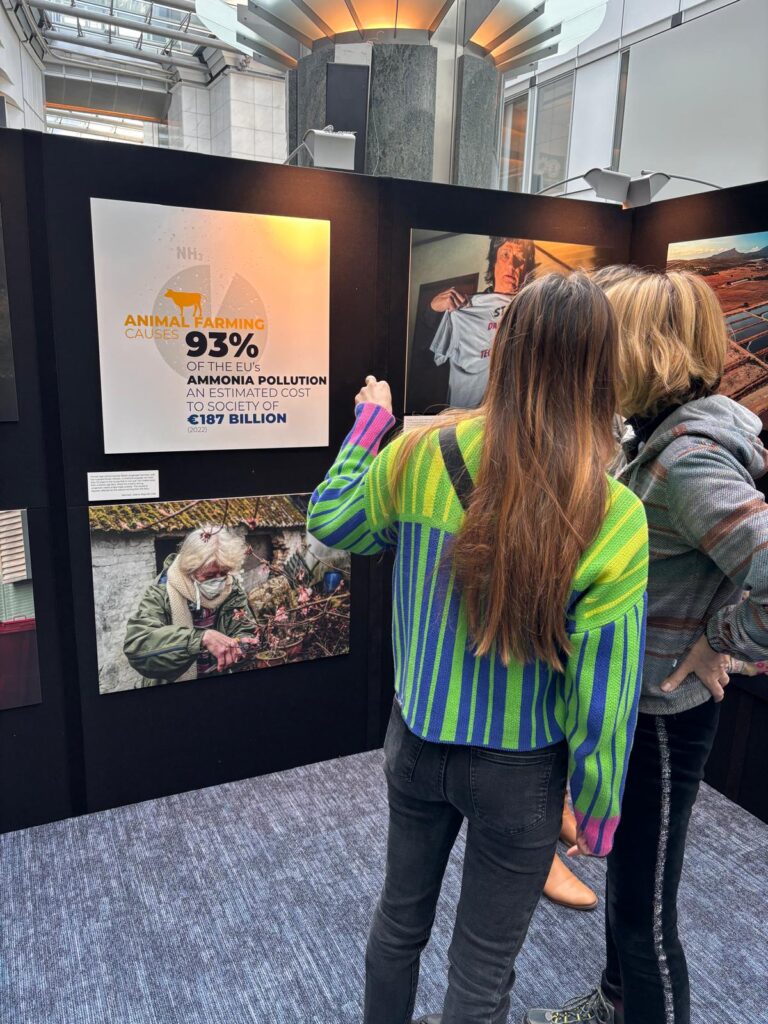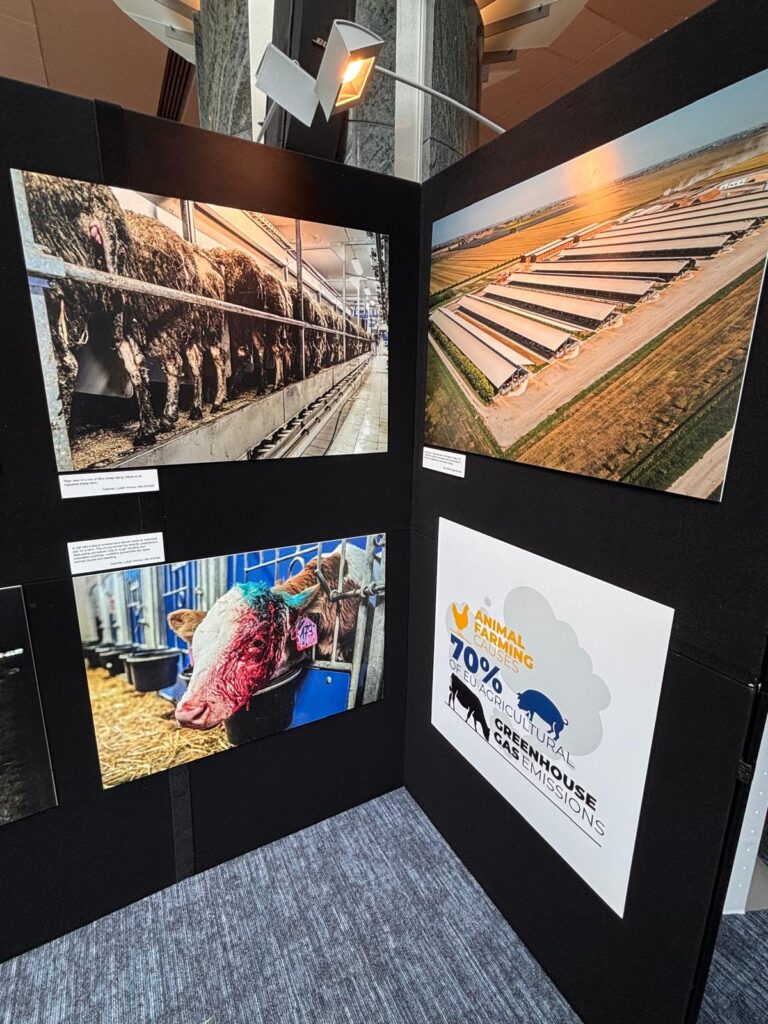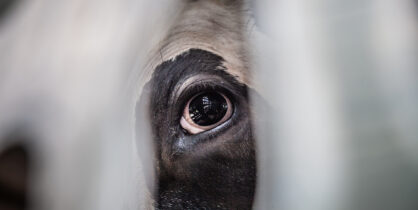The Pictures They Don’t Want You to See
It’s one thing to read about the costs of factory farming – it’s another to stand face to face with them and being able to see behind closed farm doors.
Exhibitions hold a special kind of power. As the saying goes, a picture is worth a thousand words – and a collection of them can speak volumes.
The images at the European Parliament exhibition that I visited a few months ago did more than that: they left you with a feeling you can’t quite name – heavy, unsettled, impressed.
‘Factory Farming: Unveiling the Hidden Costs’ sheds light on the effects of factory farming on animals, human health, and the environment within the EU. Captured by several photographers, each photo tells a unique story about the suffering caused by our intensive factory farming sector.
77% of farmland is used for animal agriculture, which supplies only 18% of global calories.
At the launch, Members of the European Parliament and photojournalists spoke briefly. Jo-Anne McArthur, an animal rights photojournalist and founder of the We Animals platform behind the exhibition, described her work documenting unjust cruelty and hidden exploitation. She recalled her first time inside an industrial pig farm in Europe: “It was at night. As we approached the farm, the smell hit me like a wall. My eyes were already watering before I’d even stepped inside.” Inside, she found endless cages, no windows, and pigs caked in filth.
“That smell is something that stays in your camera, in the rubber, for weeks and weeks after you spend even an hour on a farm,” she said. “Pigs also have a much greater sense of smell than we do. And they have to live in this?”

The photos of the exhibition were not shy and held nothing back, exposing the raw reality. They showed ducklings for foie gras crammed into dark barns, sheep being milked while matted with dirt, rows of tiny rabbit cages, an isolated dairy calf crying out after separation from its mother, and piglets having their teeth clipped and tails cut – without anaesthetic.
Just because I want to make photos doesn’t mean I like the means with which I have to take them, which is often surreptitiously. It’s often the only way to get proof of what goes on in farms, because farms usually aren’t open to people with a camera.”
Jo-Anne McArthur, photojournalist
Next to the photographs were complementary infographics on display, providing the data behind them and emphasising the severity of the issues. For example, one photo showed a five- to six-week-old broiler chicken from a farm in Italy, with splayed out legs sitting on its stomach. It was unable to stand or walk due to its rapid growth, making it difficult to reach water – a common issue.
Beneath the photo, an infographic explained how chickens raised for meat undergo intensive selection to promote faster growth. As a result, modern commercial chickens gain weight nearly five times faster than they did in the 1950s. That leads to numerous health and welfare issues, making it nearly impossible for these chickens to experience a good quality of life. In 1957, a 56-day-old chicken weighed around 905 grams. By 1978, that had doubled to 1,808 grams. In 2005, it had more than doubled again to 4,202 grams – over four times their weight from seventy years ago.
The exhibition also spotlighted the environmental damage and public health consequences of factory farming. Aerial shots revealed endless rows of barns, while others showed pig manure spilling into nature, staining rivers and lakes.
Animal farming causes 70% of EU agricultural greenhouse gas emissions.
Human stories were there too. A portrait of Jan, a Dutch resident living just metres from a massive pig farm, told of health impacts from the constant air pollution. A photo of Giorgio from Italy, displayed him wearing a mask to protect himself from the odours of nearby cow and chicken farms. He suffers from extreme nausea and a loss of consciousness because of the exposure. Another image showed a grieving couple holding a photograph of their late son, who had suffered from severe health conditions. Due to the toxic air from factory farms near their house, he was not able to receive treatment at home, meaning his mother had to travel daily to care for him up until his death.


In their closing remarks, MEP Krzysztof Śmiszek and MEP Tilly Metz said that this is about both human and animal welfare. It’s about the water we drink, the soil that grows food, the air we breathe, and the people who live or work near these farms. We can no longer turn a blind eye to the environmental risks, the pollution, the smell, the consequences for the landscape, and the suffering of living beings.
This is the kind of exhibition that lingers. You leave more informed, yet with more questions than when you arrived. You feel hopeful for change, but heavy-hearted.
You might think: I don’t want to see these photos. I understand. I didn’t want to either. But they are reality.
So why display them? And who should see them? The answer is: anyone who can help. Although photographs don’t have the power to change these systems, they can inspire and empower others – you, me, us – to do so.
